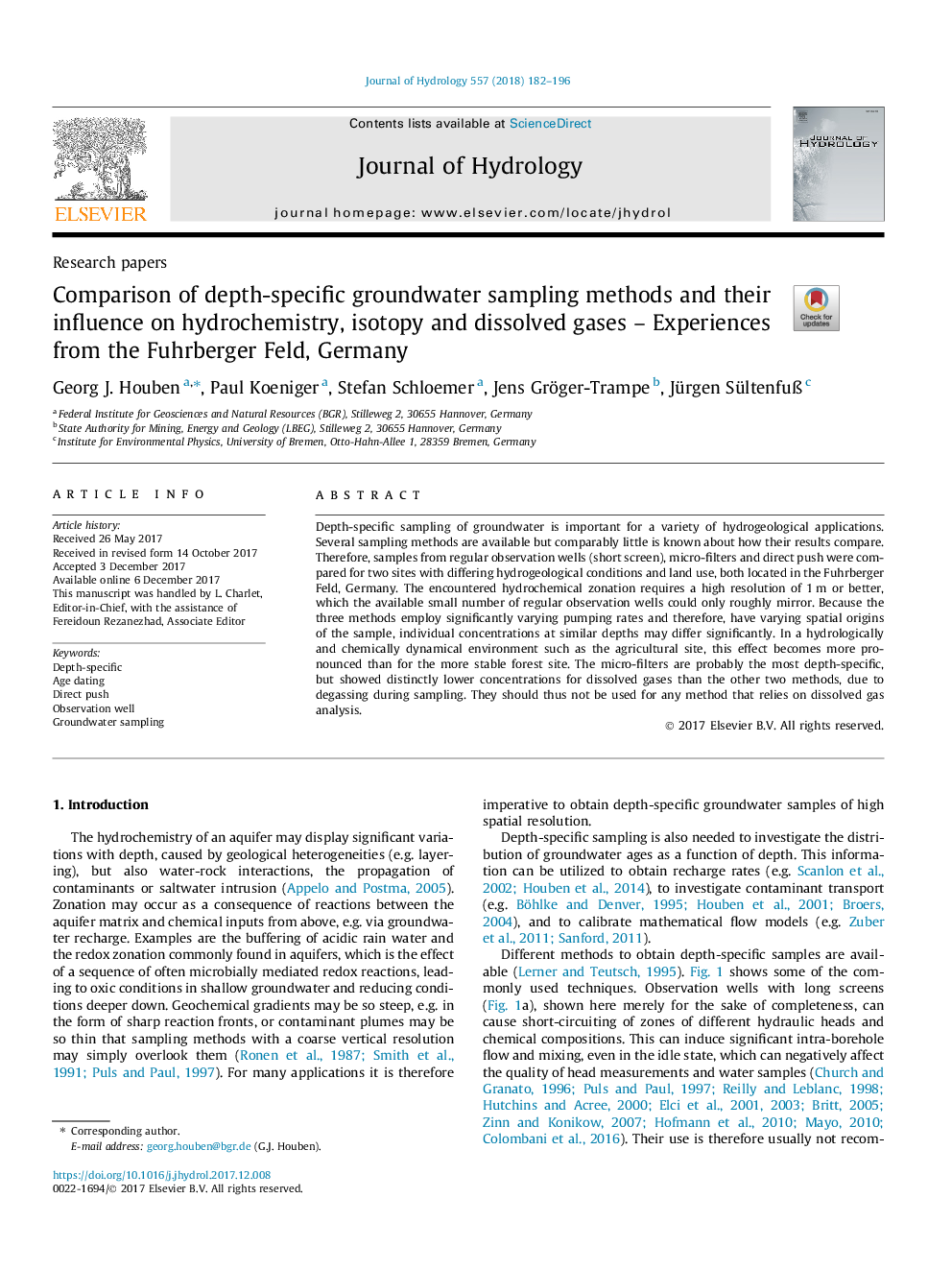| Article ID | Journal | Published Year | Pages | File Type |
|---|---|---|---|---|
| 8895006 | Journal of Hydrology | 2018 | 15 Pages |
Abstract
Depth-specific sampling of groundwater is important for a variety of hydrogeological applications. Several sampling methods are available but comparably little is known about how their results compare. Therefore, samples from regular observation wells (short screen), micro-filters and direct push were compared for two sites with differing hydrogeological conditions and land use, both located in the Fuhrberger Feld, Germany. The encountered hydrochemical zonation requires a high resolution of 1â¯m or better, which the available small number of regular observation wells could only roughly mirror. Because the three methods employ significantly varying pumping rates and therefore, have varying spatial origins of the sample, individual concentrations at similar depths may differ significantly. In a hydrologically and chemically dynamical environment such as the agricultural site, this effect becomes more pronounced than for the more stable forest site. The micro-filters are probably the most depth-specific, but showed distinctly lower concentrations for dissolved gases than the other two methods, due to degassing during sampling. They should thus not be used for any method that relies on dissolved gas analysis.
Related Topics
Physical Sciences and Engineering
Earth and Planetary Sciences
Earth-Surface Processes
Authors
Georg J. Houben, Paul Koeniger, Stefan Schloemer, Jens Gröger-Trampe, Jürgen SültenfuÃ,
